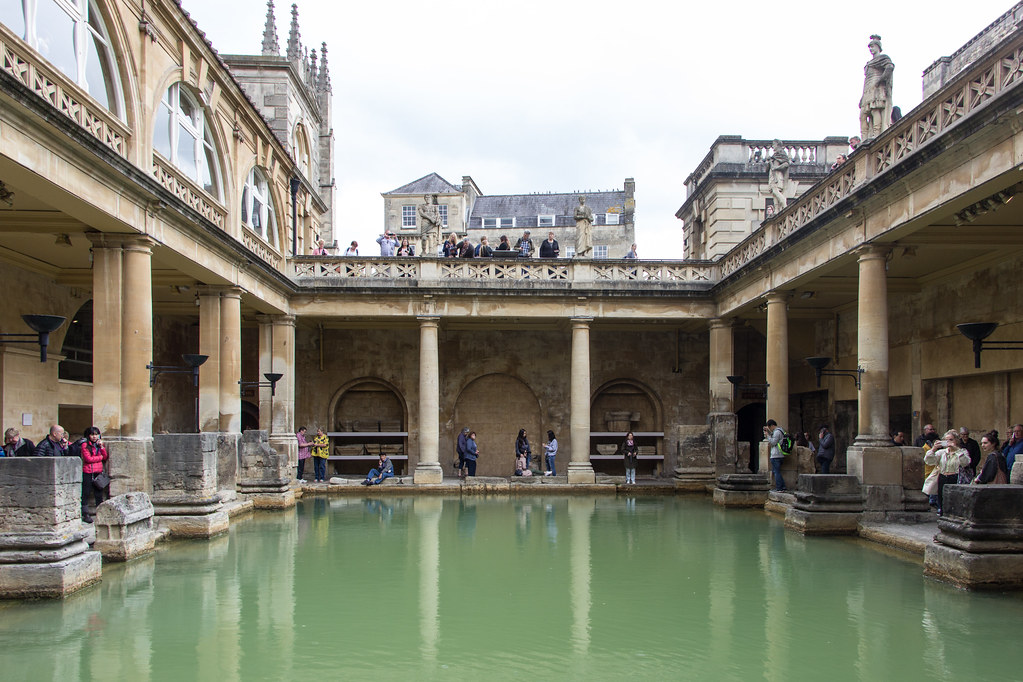I continued to ponder how I might complete my county-counting adventures for the 133 counties and independent cities within the Commonwealth Virginia, with a dozen still remaining on my list. It might be feasible after a long weekend of concentrated efforts, I considered. Maybe someday. How lucky to be from somewhere like Delaware with only three counties to count. Completing my home state requires considerably more effort. So that’s how I found myself pondering Virginia’s Bath County, one of the dirty dozen not yet captured by 12MC.
[UPDATE: I finished the Virginia counties in March 2016!]
Plenty of Springs
The name certainly highlighted the bathing angle that underpinned its economy. Geothermally warmed waters percolated to the surface from springs throughout Bath County. It naturally contained various minerals considered beneficial and curative to its devotees. That explained towns named Healing Springs, Hot Springs, Millboro Springs, Warm Springs and West Warm Springs all within a few minutes of each other. That seemed like a pretty impressive cluster for a county of fewer than five thousand residents.
That made me wonder about the actual springs themselves. A quick check of GNIS produced Big Spring, Blowing Springs, Bubbling Spring, Fowler Spring, Grose Spring, Muddy Run Spring, Sand Springs, and Warm Springs Baths.
Mountains and valleys defined Bath County. The Appalachians cut northeast to southwest, with two distinct valleys of the Jackson and Cowpasture Rivers (which join later to form the James River). The springs bubbled to the surface in lower elevations carved by these rivers and their tributaries. It’s a rugged and remote corner of the Commonwealth even today, with nearly 90% of Bath covered by forest and most of that included within the public lands of the George Washington National Forest.
Good Marketing
The name derived from a shrewd Eighteenth Century business decision, a clear homage to the City of Bath in England (map). The English incarnation dated back to Roman times. It grew in popularity as a resort destination in the Stuart era and even more so in the Georgian era.

The Commonwealth of Virginia formed a new county in 1790. But what should they call it? The Native Americans knew about the springs for a long time. Colonial mountaineers and early settlers soon discovered them too. Visitors trekked to this remote outpost in increasing numbers simply to relax in the soothing waters. A hotel arrived as early as 1766 to cater to them, constructed by Andrew Lewis and Thomas Bullitt
Bath in England maintained its position at the height of its Georgian glory at the time. Naturally the spring-fed mountains and valleys became Bath County, a name seemingly selected to leverage the popularity of the English resort in the hopes of attracting more tourism.
The Homestead

Numerous spas continue to bring tourist dollars to Bath County more than two centuries later. The Homestead dominates Bath, a renowned resort built on the site of the original 1766 hotel, now part of the Omni Hotels & Resorts consortium. The property also includes the Jefferson Pools, “the cream of the crop of Virginia hot springs and have drawn visitors from across the country for centuries. The pools are named for Thomas Jefferson, who sojourned here in 1818 to spend three weeks relaxing…“
I think maybe a law specifies that every property in Central or Western Virginia has to have an obligatory connection to Thomas Jefferson. Otherwise nobody can take it seriously. Obviously the Homestead has a solid one.
I could maybe use a little pampering on my next county counting adventure.
Somewhat Related
I also noted Bubbling Spring Recreation Area as I checked GNIS. More specifically, I saw it listed on the Nimrod Hall map. That map, in turn, got its name from an actual Nimrod Hall, a “summer resort and art colony” founded in 1783.
What did that have to do with anything? It represented one more site to add to 12MC’s Nimrod list!

Leave a Reply